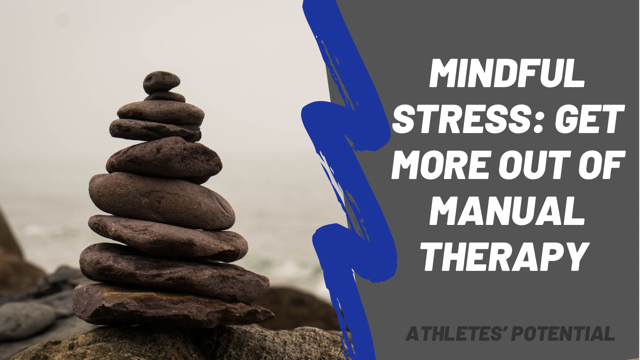Mindful Tolerance and The Parasympathetic Nervous System - How You Can Help Yourself Get More Out Of Your Manual Therapy
Dec 09, 2021
As a physical therapist, my job is to interact with pain and discomfort all day long. Most people don’t come to see me when they’re feeling great! They come to see me when they are injured, sad, and without a clear path forward. They come to see me when pain is not only slowing them down, but possibly taking away something that they love, such as running or sport! The pain they feel is a warning light that is flashing bright, and every patient I’ve ever seen has needed some guidance on how to interpret the signals that their pain is trying to convey.
Seeing as every experience of pain is unique to the individual, I won’t go into specifics on these subjective experiences, as they are so varied! What I do want to share is what we now know about pain science that we didn’t know even just ten years ago, and more importantly what can we do with this knowledge of pain science! As it turns out, there are reasonably well-performed studies that support the use of short bouts of mindfulness to manage pain tolerance.(1) A huge review came out in 2020 that may be worth looking through if you have the time (see citations). Now, within my treatment room, I’ve seen tons of evidence that mindfulness helps pain tolerance!
Any time I perform any type of manual therapy treatment -- dry needling, voodoo band application, Graston, or cupping -- I’m very aware of my patient’s pain tolerance. It is very important that my patients be able to relax while I’m performing these techniques. I’ve seen time and time again, if a patient is not breathing deeply in a relaxed state (or at least attempting to!), the technique is less effective.
This makes sense. In one of my favorite books on pain science, “Explain Pain,” by David Butler, the “fight or flight” system is the sympathetic nervous system. This system can be triggered by various stimuli, such as loud noises, fearful emotions, and other things that we determine as possible threats. Once this system is triggered, our muscles tense as we are getting ready to fight or run. This is the exact opposite system we want triggered when we are receiving physical therapy treatments! What we would like to trigger is the parasympathetic nervous system, as it is the system responsible for our “rest and digest” capacity.
As a side note, if you have any interest in pain science, I’d highly recommend you purchase the book, “Explain Pain.” It has been incredibly formative in my practice and is written in an approachable, well-explained manner that can give you a great understanding of our pain system. Ok, back to the systems!
If my patients are able to tap into this parasympathetic system, their muscles relax and absorb the treatments that I am providing. So, what is the best way to access this parasympathetic system? While I wish we could access this system with a light switch, we cannot. But, the most effective way to coax it into action is through deep breathing and mindfulness. Many times, I can simply hold onto a trigger point and ask my patients to breathe deeply, and with no motion and the proper application of pressure, we work as a team to access their parasympathetic system, thereby allowing the trigger point to release more rapidly than if I were to be fighting with their sympathetic system!
So, the next time you’re on that foam roller, lacrosse ball, or receiving dry needling, do your best to breathe deeply. You’ll be accessing your parasympathetic nervous system, getting more results more rapidly, and getting yourself to where you want to be with your muscle tissue. If you have any questions on this mechanism in our body or think you would like to experience the effect that breathing and “downregulation” has on physical therapy treatments, reach out and schedule a session with me today!
Thanks for reading,
Dr. Marcus Rein PT, DPT
1. Shires, Alice, et al. “The Efficacy of Mindfulness-Based Interventions in Acute Pain: A Systematic Review and Meta-Analysis.” Pain, vol. 161, no. 8, 2020, pp. 1698–1707., https://doi.org/10.1097/j.pain.0000000000001877.
2. Butler, David S., et al. Explain Pain. Noigroup Publications, 2019.
Let us help you figure out to live your best active life today!
Remember, Movement is Medicine!

